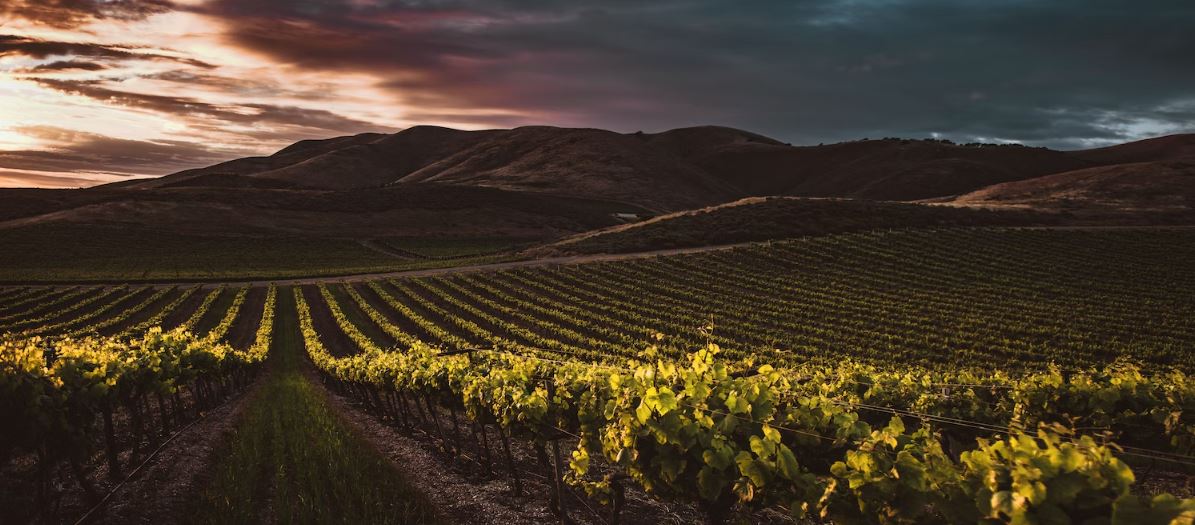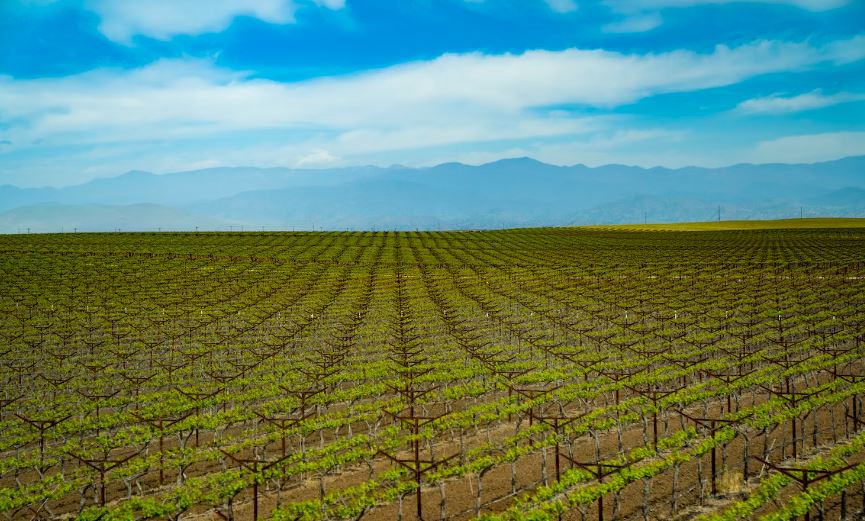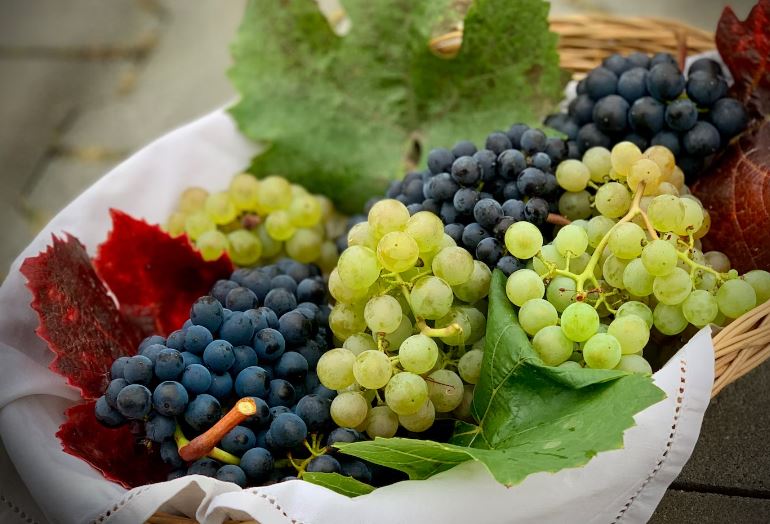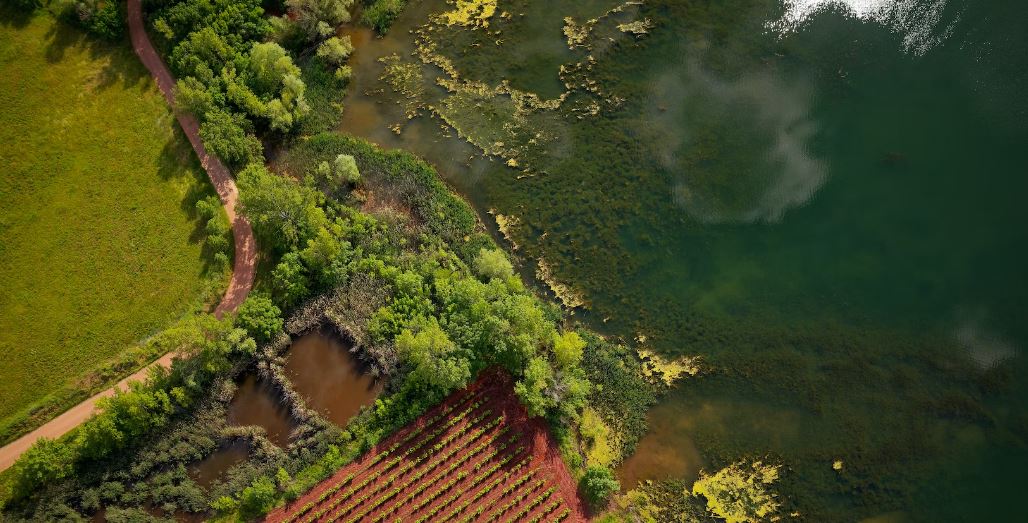Introduction
Nestled along the picturesque shores of Lake Ontario and caressed by the gentle embrace of the Niagara Escarpment, the Niagara Wine Region is a vinicultural gem that sparkles with the essence of excellence.
With rolling vineyards, award-winning wineries, and a rich tapestry of flavors waiting to be discovered, this enchanting corner of the world beckons both connoisseurs and adventurers alike. Step into a realm where grapes become liquid poetry, and every sip tells a story of passion, terroir, and the artistry of winemaking.
The Niagara Wine Region, often referred to as the Niagara Peninsula or Niagara Wine Country, is a remarkable and picturesque wine-producing area located in the Canadian province of Ontario, as well as the neighboring American state of New York. Welcome to the Niagara Wine Region, where every bottle is a testament to nature’s bounty and human ingenuity. Here are some key aspects to learn about this amazing wine region:
Breathtaking Scenery
The breathtaking scenery in the Niagara Wine Region is nothing short of enchanting. Here are some of the key elements that make the landscape so captivating:
1. Vineyard Vistas
Rolling vineyards as far as the eye can see create a patchwork of lush greenery. Rows of grapevines stretch across the landscape, creating a serene and picturesque ambiance. The orderly rows are a testament to the careful cultivation of grapes that produce the region’s renowned wines.
2. Niagara Escarpment
The Niagara Escarpment, a UNESCO World Biosphere Reserve, adds dramatic beauty to the region. This ancient limestone ridge forms the backdrop for many vineyards and wineries. Hiking along the escarpment trails offers breathtaking views of the surrounding countryside.
3. Lake Ontario
The region’s proximity to Lake Ontario provides a moderating effect on the climate and contributes to the stunning scenery. The glistening waters of the lake offer a tranquil setting for wine tasting and relaxation.
4. Niagara River
The Niagara River, which connects Lake Erie to Lake Ontario, winds its way through the region. The riverbanks are lined with greenery and offer scenic spots for picnicking and enjoying the views.
5. Orchards and Farms
In addition to vineyards, the landscape is dotted with fruit orchards and farms. Depending on the season, you may encounter blossoming fruit trees or ripe orchards bursting with apples, peaches, and cherries.
6. Niagara Falls
While not within the wine region itself, Niagara Falls is a short drive away. The awe-inspiring power and beauty of the falls, combined with the surrounding parkland, create a natural wonder that is truly breathtaking.
7. Seasonal Changes
The Niagara Wine Region experiences all four seasons, each offering its own unique charm. Spring brings blossoms, summer offers lush greenery, fall brings vibrant foliage, and winter blankets the region in snow, creating a different but equally captivating landscape.
8. Sunsets and Sunrises
The open expanses of the region provide ideal vantage points for watching the sun paint the sky with breathtaking hues during sunrise and sunset. These moments are particularly enchanting when enjoyed with a glass of local wine in hand.
9. Historic Architecture
In towns like Niagara-on-the-Lake, you’ll find historic buildings and charming streetscapes that add to the overall scenic appeal. Cobblestone streets, heritage homes, and well-preserved architecture contribute to the region’s character.
10. Wildlife
The natural beauty of the region also attracts wildlife. Birdwatchers can spot a variety of avian species, and there are opportunities to encounter other wildlife, including deer and smaller mammals, while exploring the countryside.
The Niagara Wine Region’s breathtaking scenery is an essential part of its allure, making it a place where nature’s beauty harmoniously complements the artistry of winemaking. Whether you’re exploring the vineyards, hiking the escarpment trails, or simply enjoying a leisurely drive along the scenic routes, the landscape is sure to leave a lasting impression.
World-Class Wineries
The Niagara Wine Region is home to a remarkable collection of world-class wineries, each offering its own unique charm and exceptional wine experiences. Here are some of the standout wineries in the region:
Jackson-Triggs Winery
Known for its stunning architecture and commitment to sustainable practices, Jackson-Triggs is one of Canada’s most recognized wineries. They produce a wide range of wines, including award-winning Ice wines.
Inniskillin Winery
Inniskillin is celebrated for its Ice wine production, which has garnered international acclaim. The winery offers guided tours and tastings, allowing visitors to explore the art of Ice wine production.
Peller Estates Winery
Peller Estates is known for its innovative and premium wines. The winery’s Tasting Room offers a unique 10Below Ice wine Lounge experience, where you can sample Ice wine in a sub-zero setting.
Trius Winery at Hillebrand
Trius Winery is known for its world-class sparkling wines and Bordeaux-style reds. The winery’s culinary program includes a restaurant, Trius Red, which offers gourmet dining paired with their wines.
Stratus Vineyards
Stratus is renowned for its commitment to sustainability and biodynamic farming. They produce a range of wines, including Chardonnay, Cabernet Franc, and Merlot. The modern winery building is a design marvel. Home to a wide array of wineries, from boutique gems to renowned estates, the Niagara Wine Region offers exceptional wine tasting opportunities. Visitors can explore diverse wine styles, from crisp whites to bold reds, and even the renowned Ice wine.
Grape Varietals
The Niagara Wine Region in Canada is known for its diverse range of grape varietals, both red and white, thanks to its unique terroir and climate. Here are some of the grape varietals that thrive in the Niagara Wine Region:
1. White Grape Varietals
- Chardonnay
Chardonnay is one of the most widely planted white grape varietals in the region. The Niagara Peninsula’s cool climate allows for the production of elegant and expressive Chardonnays, with flavors ranging from crisp and citrusy to rich and buttery.
- Riesling
Riesling thrives in the cool climate of the region, producing wines with vibrant acidity and a wide range of flavors, from zesty lime and green apple to honeyed sweetness. Niagara Rieslings are highly acclaimed, especially those made in the off-dry and Ice wine styles.
- Sauvignon Blanc
Sauvignon Blanc vines also do well in the Niagara Wine Region, producing wines with herbaceous and citrusy notes. These wines are refreshing and often enjoyed as a summer sipper.
- Gewürztraminer
Gewürztraminer is known for its aromatic and spicy character. In Niagara, it can express floral and lychee aromas, making it a distinctive white wine option.
- Viognier
Viognier is a lesser-known white grape varietal in the region but is gaining popularity. It produces wines with floral and stone fruit aromas and a rich, full-bodied character.
2. Red Grape Varietals
- Pinot Noir
Pinot Noir is well-suited to the Niagara Peninsula’s cool climate, producing wines with red fruit flavors, earthy notes, and silky textures. The Beams Ville Bench sub-appellation is particularly known for its high-quality Pinot Noir.
- Cabernet Franc
Cabernet Franc thrives in Niagara and is used both as a standalone varietal and in Bordeaux-style blends. It offers red fruit flavors, herbal notes, and a distinct peppery character.
- Merlot
Merlot is another popular red grape varietal in the region, known for its soft and approachable character. It often exhibits plum, cherry, and herbal notes.
- Cabernet Sauvignon
While less common than Cabernet Franc and Merlot, Cabernet Sauvignon is grown in Niagara, particularly in warmer vintages. It produces wines with black fruit, cedar, and tobacco characteristics.
- Gamay
Gamay is known for its bright red fruit flavors, making it an excellent choice for producing fruity and approachable red wines, often served slightly chilled.
- Syrah/Shiraz
This grape varietal is gaining popularity in Niagara, producing wines with dark fruit flavors, spice, and peppery notes.
- Malbec
Malbec is used in Bordeaux-style blends in the region, adding depth and dark fruit character to the wines.
- Petit Verdot
Petit Verdot is used sparingly in blends, contributing to the structure and color of red wines.
In addition to these varietals, the Niagara Wine Region also excels in the production of Ice wine, made primarily from Vidal Blanc, Riesling, and Cabernet Franc grapes. The region’s diversity of grape varietals and winemaking styles makes it a compelling destination for wine enthusiasts looking to explore a wide range of flavors and experiences.
Many other grape varieties can be found in other regions around the world. If you are interested to learn more about these, you may read our article featuring the Latest Regions Transforming the Wine Industry.
Unique Terroir
The unique terroir of the Niagara Wine Region is a defining feature that contributes to the region’s reputation for producing exceptional wines. Here are the key elements that make the terroir of this region distinct:
1. Cool Climate
The Niagara Wine Region experiences a cool climate, which is largely influenced by its proximity to Lake Ontario. This climate is well-suited for the production of high-quality cool-climate grape varieties. The temperature moderation from the lake helps to prevent extreme temperature fluctuations and provides a longer growing season, allowing grapes to ripen slowly and develop complex flavors.
2. Lake Effect
Lake Ontario plays a crucial role in the region’s climate. In the winter, it often keeps temperatures near the lake milder, protecting the vines from harsh frost and extreme cold. In the summer, the lake provides cooling breezes, which help to maintain acidity in the grapes and reduce the risk of sunburn.
3. Microclimates
The Niagara Peninsula boasts diverse microclimates due to variations in elevation, proximity to the lake, and different soil types. These microclimates offer winemakers the opportunity to experiment with various grape varieties, making it possible to produce a wide range of wine styles within a relatively small geographical area.
4. Variety of Soils
The region’s soils are diverse, with clay, limestone, shale, sandy loam, and gravel, among others. These soil variations contribute unique mineral characteristics to the wines and allow for the cultivation of a wide array of grape varietals.
5. Niagara Escarpment
The Niagara Escarpment, a UNESCO World Biosphere Reserve, runs through the region. Its limestone-rich soils are particularly well-suited for the cultivation of Chardonnay and Pinot Noir, which thrive in these conditions. The escarpment also creates variations in elevation, offering different aspects and sun exposures for vineyards.
6. Moderate Precipitation
The region typically experiences moderate rainfall during the growing season, reducing the risk of diseases and pests while promoting grape health. This consistent moisture level helps maintain grape quality.
7. Unique Ice wine Conditions
The Niagara Wine Region is renowned for its production of Ice wine. The combination of cold winters and the ability for grapes to naturally freeze on the vine is crucial for producing this sweet, dessert-style wine. These conditions make Niagara one of the world’s premier Ice wine producers.
8. Elevation Variations
Elevation differences across the region provide winemakers with opportunities to select optimal sites for specific grape varieties. Higher elevations often offer better drainage and air circulation, which are essential for grapevine health and fruit quality.
9. Experimental Spirit
Winemakers in the Niagara Wine Region are known for their innovative and experimental approach. They continually explore new grape varieties and winemaking techniques, pushing the boundaries of what the terroir can produce.
The unique terroir of the Niagara Wine Region is a harmonious blend of natural factors that create the perfect conditions for grape cultivation. This diversity allows the region to produce a wide range of wine styles, from crisp whites to robust reds and the famous Ice wine, showcasing the remarkable marriage of climate, soil, and geography.
Gourmet Cuisine
The Niagara wine region, located in Ontario, Canada, is known for its stunning vineyards and wineries, producing some exceptional wines. To complement these wines, the region offers a range of gourmet cuisine experiences. Here are some of the highlights of the gourmet cuisine of the Niagara wine region:
1. Farm-to-Table Dining
Many restaurants in the Niagara region emphasize farm-to-table dining, sourcing their ingredients locally to create fresh and seasonal dishes that pair perfectly with local wines. You can expect dishes featuring fresh produce, artisanal cheeses, and locally raised meats.
2. Winery Restaurants
Several wineries in the area have on-site restaurants that offer unique dining experiences. These restaurants often feature tasting menus that are thoughtfully paired with their wines. Examples include Peller Estates Winery Restaurant, Trius Winery Restaurant, and Ravine Vineyard Restaurant.
3. Niagara Ice wine
Niagara is famous for its ice wine, a sweet dessert wine made from grapes that have frozen on the vine. This region produces some of the best ice wine in the world, and it pairs exceptionally well with cheese and desserts.
4. Culinary Festivals
Throughout the year, the Niagara region hosts various culinary festivals, such as the Niagara Ice wine Festival and the Niagara Food & Wine Expo. These events showcase the region’s finest wines and gourmet offerings.
5. Local Specialties
While in the Niagara region, be sure to try some of the local specialties, such as butter tarts, peameal bacon sandwiches, and Ontario craft beers, in addition to the wines.
6. Wine and Food Pairing Events
Many wineries offer wine and food pairing experiences, where expert chefs create dishes specifically designed to complement the wines produced at the winery. These events are a great way to explore the synergy between food and wine.
7. Fine Dining
The Niagara-on-the-Lake area, in particular, boasts several fine dining restaurants, often housed in historic buildings. These establishments offer elegant and upscale dining experiences with a focus on locally sourced ingredients.
8. Food Tours
Consider joining a food tour in the region, which can take you to various culinary hotspots, wineries, and artisanal food producers. These tours offer a well-rounded taste of the local gourmet scene.
9. Cooking Classes
Some wineries and cooking schools in the Niagara region offer cooking classes where you can learn to prepare dishes that pair perfectly with wine. It’s a fun way to enhance your culinary skills while enjoying the local flavors.
The Niagara wine region’s gourmet cuisine scene is a delightful complement to its world-class wines. Whether you’re a wine enthusiast or a foodie, you’re sure to find a range of delectable options to explore and savor in this beautiful part of Canada.
Accessibility
The Niagara Wine Region is easily accessible, making it a convenient and popular destination for visitors from various locations. Here’s an overview of its accessibility:
1. Proximity to Major Cities
- Toronto, Canada
The Niagara Wine Region is located approximately 1.5 to 2 hours by car from Toronto, making it a popular day-trip or weekend getaway for residents and tourists in the Greater Toronto Area (GTA).
- Buffalo, New York, USA
For visitors coming from the United States, Buffalo, New York, is the nearest major city. The drive from Buffalo to the Niagara Wine Region takes about 30-45 minutes.
2. Transportation Options
- Car
Many visitors choose to travel to the Niagara Wine Region by car. It’s a convenient way to explore the various wineries and attractions at your own pace. There are well-maintained highways and scenic routes that lead to the region.
- Public Transportation
VIA Rail and GO Transit provide train services from Toronto to Niagara Falls, which is close to the wine region. Additionally, intercity bus services are available for those who prefer not to drive. Once in Niagara, you can use local transportation or taxis to reach wineries.
- Airports
The nearest major airports are Toronto Pearson International Airport (YYZ) and Buffalo Niagara International Airport (BUF), both of which offer rental car services. From either airport, you can easily access the Niagara Wine Region.
3. Accommodation Options
The Niagara Wine Region offers a range of accommodation options, including hotels, bed and breakfasts, inns, and vacation rentals. Visitors can choose from a variety of lodging choices to suit their preferences and budget.
4. Tour Packages
Many tour operators offer guided tours of the Niagara Wine Region, including transportation to and from major cities like Toronto and Buffalo. These tours can be a convenient way to explore the wineries without worrying about transportation logistics.
5. Cycling and Walking Trails
For more adventurous travelers, there are cycling and walking trails that lead to wineries and allow you to explore the region on two wheels or on foot.
6. Boat Tours
If you’re visiting from the Canadian side, you can also take a boat tour from Niagara Falls to Niagara-on-the-Lake, providing scenic views of the region along the way.
7. Customized Transportation
Some wineries in the region offer shuttle services for visitors who want to taste wines without the worry of driving afterward. Be sure to inquire about these services when planning your visit.
Overall, the Niagara Wine Region is accessible by various means of transportation, making it easy for both local and international visitors to explore its wineries, vineyards, and picturesque landscapes. Whether you’re on a day trip or an extended stay, the region offers a welcoming and accessible experience for wine enthusiasts and tourists alike.
Recognition
Wines from the Niagara Wine Region have received international acclaim and numerous awards. The region’s Icewines are particularly celebrated and sought after by wine collectors and connoisseurs.
International wine competitions, such as the Decanter World Wine Awards and the International Wine Challenge, have consistently bestowed medals upon Niagara’s wines. These accolades recognize the region’s unwavering commitment to quality and innovation. Each sip of a Niagara wine tells a story of dedication, craftsmanship, and a profound connection to the land.
Individual wineries within the Niagara Wine Region have also risen to prominence. Their dedication to crafting exceptional wines, coupled with the unique terroir, has led to numerous awards and recognitions.
CONCLUSION
In summary, the Niagara Wine Region offers a harmonious blend of natural beauty, exceptional wines, gourmet delights, and a rich cultural tapestry, all in a setting that invites exploration and relaxation. Whether you’re a wine enthusiast, a nature lover, or simply in search of a memorable vacation, this region offers a delightful experience at every turn.







